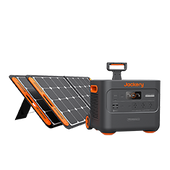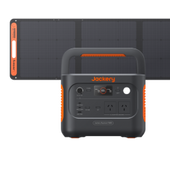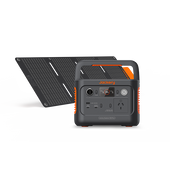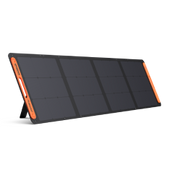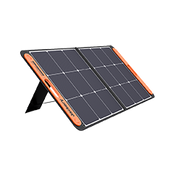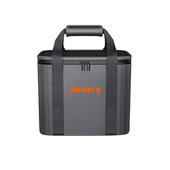|
Key Takeaways: |
|
- Anzac Day 2025 is celebrated on April 25, commemorating the Gallipoli landing in 1915 and honouring all Australians and New Zealanders who have served in wars and peacekeeping operations. - The National Ceremony at the Australian War Memorial in Canberra includes speeches, wreath-laying, the Last Post, and national anthems and is widely televised. - Red poppies and Anzac biscuits carry deep historical symbolism, linking present-day commemorations to the sacrifices of past soldiers. - Major locations for commemorations include Martin Place (Sydney), Shrine of Remembrance (Melbourne), Anzac Square (Brisbane), and Kings Park (Perth), each with unique traditions. - We suggest you take a Jackery Explorer 1000 v2 on this day to power your essentials and appliances, especially for outdoor commemoration events. |
What Is Anzac Day?
Anzac Day is a national day of commemoration in Australia and New Zealand on April 25 each year. It honours the Australian and New Zealand Army Corps (ANZAC) soldiers who served and lost their lives in the Gallipoli Campaign in 1915. It has evolved to commemorate all Australians and New Zealanders who have fought and lost their lives in wars and peacekeeping operations.
Dawn services, parades, and wreath-laying ceremonies are all common on Anzac Day. It's a significant event honouring the armed troops, sacrifice, and national pride. "Lest we forget" is a common way to convey remembering.
What Does ANZAC Stand For?
ANZAC stands for the Australian and New Zealand Army Corps. The soldiers in those armies rapidly became known as Anzacs, and their pride in that designation continues to this day.
Why Is This Day Special to Australians?
When the war began in 1914, it had only been 13 years since Australia became a federal nation, and its government was eager to establish a positive reputation with other countries. In August 1914, Australia was immediately thrown onto the Commonwealth's side when Britain declared war.
In 1915, Australian and New Zealand soldiers took part in an operation to capture the Gallipoli peninsula and open the Dardanelles to Allied fleets. The ultimate goal was to capture Constantinople (now Istanbul), the capital of the Ottoman Empire, a German ally.
When Australian and New Zealand forces reached Gallipoli on April 25, Ottoman-Turkish defenders fiercely resisted them. The struggle stretched on for eight months as what had been envisioned as a bold attempt to force Turkey out of the conflict abruptly turned into a standoff.
The Allied forces were withdrawn from the peninsula at the end of 1915 after both sides had suffered significant casualties and suffering. More than 8,000 Australian soldiers had been killed during the conflict. Gallipoli had a tremendous impact on Australians at home, and April 25 quickly became a day when Australians honoured the sacrifice of those who perished during the war.
Although the Gallipoli campaign failed to achieve its military objectives, the acts of Australian and New Zealand soldiers during the campaign left an indelible mark. What became known as the "Anzac legend" became an essential component of both nations' identities, influencing how they perceived their history and future.
Anzac Day is significant to Australians because it commemorates the heroism, sacrifice, and spirit of the men who fought for their nation, particularly those in the Gallipoli Campaign during World War I, where many young Australian lives were lost. It represents the formation of a distinct Australian national identity, emphasising virtues like mateship, bravery, and resilience.
Though the Gallipoli battle was a military loss, the ANZAC troops' valour left a lasting impact. Anzac Day brings Australians together in remembering, pride, and gratitude—not only for those who fought in WWI but for everyone who has served the country since.
How is Anzac Day Commemorated Around Australia?
Every year, on April 25, Australians mark Anzac Day. This day commemorates the arrival of Australian and New Zealand troops in Gallipoli as part of the Allies' attack in 1915. Marches are held nationwide on Anzac Day 2025, and dawn events draw sizable crowds.

1. Dawn Services
Time: Starting around 4:30–5:30 AM.
Location: Held across the country.
Significance: Symbolise the time of the original Gallipoli landing on April 25, 1915.
Activities:
The Last Post bugle call.
A minute of silence.
Reveille or Rouse (signalling the end of the silence).
Prayers, hymns, and recitations (e.g., The Ode).
Major dawn services occur at iconic sites like the Australian War Memorial in Canberra and Sydney's Martin Place.
Details: One of the most revered and well-attended rituals on Anzac Day is the Dawn Service. It is believed that the military practice known as the "stand-to" is where the Dawn Service got its start. In the dim light of dusk and dawn, opposing armies frequently launched attacks.
The Australian military was always on guard, routinely waking up the men and arming them at their places before the other armies could attack. The Australian military continues to employ the stand-to strategy today.
The Dawn Service aims to recreate those peaceful times when warriors could connect and think in the near darkness. Although the first Dawn Services were silent vigils conducted solely by veterans, everyone in Australia is welcome to participate. Some services now include hymns, riffle volleys, and readings.
2. Anzac Day Marches
Time: Begin mid-morning, often around 9:00–10:00 AM.
Location: Held in capital cities, towns, and regional areas.
Activities:
Veterans, including WWII, Korea, Vietnam, Afghanistan, and peacekeeping forces.
Active ADF (Australian Defence Force) members and military cadets.
Families of those who served, especially where veterans have passed.
Spectators line the streets to applaud and show respect.
Details: Veterans and The Returned & Services League members participate in marches held in several communities throughout the day. Along the procession routes, thousands of people congregate to express gratitude and respect.
3. The National Ceremony
Time: 9.30 AM to approx. 11.15 AM
Location: Parade Ground, Canberra
Details: Activities are also taking place on the days preceding and following. The Memorial has its own Dawn Service, a national celebration that includes a march of veterans and peacekeepers and exhibitions throughout the weekend.
The National Ceremony at the Australian War Memorial is preceded by the customary order of service, which includes the veteran's march, the Commemorative Address, the laying of wreaths, the sounding of the Last Post, the observance of one minute's silence, the Australian and New Zealand national anthems, and the laying of wreaths.

4. Other Activities
Anzac Day Football: The game between Collingwood and Essendon did not become regular until 1995, even though football had been played on Anzac Day for several years. AFL matches were frequently held on Anzac Day when Collingwood and Essendon first faced off because the RSL benefited from the day's funding.
After that initial game between the traditional rivals, though, it became evident that this yearly event was a unique way to honour the principles of Anzac Day; Anzac soldiers played football while stationed all over the world as a means of honing their skills, maintaining a sense of humour, and strengthening their bonds with themselves.
At the conclusion of the yearly competition, the player who best exhibits these highly regarded Australian attributes receives the Anzac medal. This same spirit, courage, mateship, and fairness permeate the entire day.
Red Poppies: The following lyrics from the poem "In Flanders Field" by Canadian Colonel John McCrae remark, "We shall not sleep, though poppies grow / In Flanders fields." Red poppies were the first flowers to emerge on the battlefields of Belgium and Northern France despite the devastation caused by the First World War.
Soldiers often told one other than the rich red colour of the blooms came from the blood of the fallen seeping into the earth. As a sign of remembrance and also as a reminder that new hope arises out of sacrifice, these crimson flowers are planted on war memorials.
Anzac Biscuits: The origins of these goodies were somewhat utilitarian. Soldiers' relatives and friends would send care packages abroad during World War I. A biscuit prepared from rolled oats, sugar, flour, coconut, butter, and a few other components became a popular pastry to pack in boxes since whatever food they could send had to be nutrient-dense and resistant to spoiling. One of the few goods authorised to use the Anzac acronym protected by federal law is still Anzac biscuits.
Some Popular Locations for Anzac Day Commemorations
Every state in Australia observed Anzac Day differently. Following a commemorative service, Gallipoli veterans and new recruits (war volunteers) marched through the streets of their town or city, and most states held some sort of evening celebration.
In Victoria, Anzac Day was centred around large-scale celebrations to raise money for the troops. These are some of the most well-known and important sites for Anzac Day commemorations across Australia:

Martin Place
Location: Sydney, NSW
The annual Anzac Day March begins at 9 AM in Martin Place and ends at the end of Hyde Park on Liverpool Street. At around 12:30 PM, a commemorative service will be adjacent to the Pool of Remembrance at the Anzac War Memorial in Hyde Park. Martin Place is crucial to Sydney's Anzac Day commemorations and is surrounded by heritage-listed buildings.
Anzac Square
Locations: Brisbane, QLD
Brisbane observes Anzac Day with a silent service at midnight the day before, followed by a Dawn Service at the Shrine of Remembrance. The Eternal Flame, which represents unending remembrance, is at Anzac Square. Between 10,000 and 15,000 people participate in the Anzac Day March in Brisbane, while roughly 50,000 people watch in support. The Royal Australian Navy has previously led the march.
Kings Park and State War Memorial
Location: Perth, WA
Located in Perth, the State War Memorial is the location of the most significant Dawn Service in the state of Western Australia. As a means of filling the time between the Dawn ceremony and the march, which culminates in a memorial ceremony, there is also a Gunfire Breakfast open to former members of the armed forces and community members.
Shrine of Remembrance
Location: Melbourne, VIC
Melbourne's Shrine of Remembrance hosts both a Dawn Service and a Ray of Light event. The Consort of Melbourne also hosts a concert at St Paul's Cathedral with the Choir of St James' King Street from Sydney. Along with pieces by the old masters Bach and Schutz, Johannes Brahms, a gifted composer, lecturer, and music therapist, composed a chorale peace as solace to the living in memory of those who have passed away.
Resources for You to Participate in Anzac Day 2025
The following is a list of appropriate materials that can be utilised by students, teachers, families, and members of the broader community to acquire knowledge and commemorate Anzac Day 2025:

Australian War Memorial (AWM)
Website: www.awm.gov.au
What Does It Offer: Detailed history, personal stories, photographs, videos, teaching resources, and live streams of dawn services and commemorative events.
Significance: The AWM is Australia's premier institute for military history. Its website allows people to learn about soldiers' tales, view original images, and watch archival recordings. It also offers live streaming of national services on Anzac Day, establishing itself as a focus for digital engagement and education.
Department of Veterans' Affairs (DVA)
Website: www.dva.gov.au
What Does It Offer: Official Anzac Day posters, booklets, a school education pack, and an "Anzac Portal" (anzacportal.dva.gov.au) with stories, activities, and lesson plans for all ages.
Significance: The DVA promotes learning and commemoration through the Anzac Portal (anzacportal.dva.gov.au), which contains lesson ideas, student activities, and veteran tales. It is a fantastic resource for teachers, students, and anyone wanting to learn about Anzac Day.
RSL Australia (Returned & Services League)
Website: www.rslaustralia.org
What Does It Offer: Information on local Anzac Day services, march times, Two-Up venues, fundraising campaigns, and many state-based RSL websites offer event schedules and veteran support information.
Significance: RSL clubs are vital to Anzac Day celebrations throughout Australia. Their websites include march timings, morning service places, and community events. They also support veterans and their families, making the RSL an essential link between previous service and current community involvement.
ABC Education
Website: education.abc.net.au
What Does It Offer: Videos, animations, and stories about Gallipoli, the ANZACs, and the Anzac spirit.
Significance: ABC Education provides Anzac history in simple, entertaining formats perfect for classroom or home learning. It contains items such as the "Minibeast Heroes" series for younger audiences and more in-depth pieces for secondary students, all of which are curriculum-aligned.
National Archives of Australia
Website: www.naa.gov.au
What Does It Offer: Military service records, war diaries, and digitised letters from Australian soldiers.
Significance: The NAA is ideal for anyone who desires to track their family's military history or undertake research. By entering a relative's name, you can frequently uncover enlistment information, letters from the front, and unit movements, providing a deeply personal connection to Australia's wartime history.
Jackery Explorer 1000 v2 for Anzac Day 2025
The Jackery Explorer 1000 v2 portable power station can be a versatile asset during Anzac Day 2025 commemorations in Australia in several ways, particularly if you participate in or organise events outside of main power sources.

The Jackery 1000 v2 can power portable speakers to play the Last Post, the Rouse, or the national anthem for smaller commemorative gatherings or personal tributes at less established sites. This ensures these important ceremony elements can be observed with appropriate audio.
Anzac Day dawn services often occur before sunrise. The Jackery 1000 v2 can power LED lights to illuminate memorial sites, pathways, or gathering areas, ensuring safety and allowing attendees to see clearly during the solemn occasion. Keep phones and other communication devices charged to stay in contact with family and friends attending different services or to stream live broadcasts of the national ceremonies.
For educational displays or sharing historical images related to Anzac Day at community events, the Jackery 1000 v2 could power a small portable projector.
If you are involved in running a community event on Anzac Day, the power station can supply electricity for small information booths, card readers for donations to veterans' organisations, or even low-power cooking appliances for traditional Anzac biscuits and gunfire breakfasts (if permitted and wattage allows).
|
Appliances |
Working Hours |
|
Phone (29W) |
34 Times |
|
Portable Speaker (60W) |
15H |
|
Laptop (80W) |
13 Times |
|
Projector (100W) |
7.6H |
|
Electric Biscuit Maker (800W) |
1.1H |
(*The working hours are only for reference; the actual working hours depend on your usage.)
Portable Powerhouse for Events: With a robust 1500W AC output and a surge peak of 3000W, this device can support various outdoor appliances during Anzac Day, including portable speakers, projectors, cameras, phones, etc. The device includes 100W PD Fast USB-C charging (both input and output) for efficient recharging, possesses a substantial 1070Wh capacity, and is designed in a compact size to optimise space utilisation.
Easy to Carry: The Jackery Explorer 1000 v2 Portable Power Station is engineered for mobile energy solutions. Weighing about 23.8 lbs and equipped with a compact foldable handle, it is more lightweight and portable than conventional items. Besides, it is 20% smaller and 10% lighter than mainstream products. This powerhouse conveniently fits into the back compartment for effortless storage, guaranteeing you are never without power.
More Than Fast Charging: Jackery's upgraded Power Station exhibits a 50% enhancement in power output compared to the previous Explorer 1000 model, with an AC output of 1500W. It charges 7.5 times faster, achieving a full charge in just 59 min through the Jackery App. The LiFePO4 battery exhibits a lifespan four times greater than conventional batteries, supporting 4,000 life cycles while maintaining over 70% of its capacity.
Safer to Use: The Jackery Explorer 1000 v2 offers rapid charging capabilities, achieving a full charge in 60 minutes when utilised with the accompanying application. The ChargeShield 2.0 system provides 62 types of safety protection and is CE-certified. It features comprehensive fire and shock resistance to ensure quality and optimal safety.
|
|
Explorer 1000 v2 |
|
Capacity |
1070Wh |
|
Battery Cell |
LiFePO4 |
|
Weight |
10.8 kg |
|
Size |
32.7 x 22.4 x 24.7 cm |
|
Recharge Life Cycle |
4000 cycles to 70%+ capacity |
|
APP Control |
Yes |
|
UPS |
UPS≤20ms |
|
Working Temperature |
Charge Temperature: 0~45C Discharge Temperature:-10~45C |
|
Quiet Level |
Less than 22dB |
|
Safety |
ChargeShield 2.0 10-Year Lifespan UL94 Fire Resistance Rating IEC60068 Shock-Resistant Level |
|
Output Ports |
2*AC Output: 230V, 50Hz, 1500W Rated, 3000W Surge Peak |
|
1*USB-A: 18W Max,5-6V⎓ 3A,6-9V⎓ 2A,9-12V⎓ 1.5A |
|
|
USB-C1: 30W Max, 5V⎓3A, 9V⎓3A, 12V⎓2.5A, 15V⎓2A, 20V⎓1.5A |
|
|
USB-C2: 100W Max, 5V⎓3A, 9V⎓3A,12V⎓3A, 15V ⎓3A, 20⎓5A |
|
|
Carport: 12V⎓10A Max |
|
|
Recharging Methods |
Explorer 1000 v2 + 2*SolarSaga 100W: 7.5H |
|
Emergency Charging via App: 1H |
|
|
AC Adapter: 1.7H |
|
|
Car Adapter: 12H |
Anzac Day 2025 FAQs
The following are the frequently asked questions about the Anzac Day 2025 in Australia:
1. Why do we celebrate Anzac Day?
Anzac Day celebrated on April 25, is a national day of remembrance in Australia and New Zealand, commemorating the first significant military action fought by Australian and New Zealand forces during World War I, the landing at Gallipoli in 1915, and the sacrifices of all those who have served in Australia's military.
2. Is Anzac Day a public holiday in Australia?
Anzac Day, a national public holiday in Australia, is always observed on April 25 to commemorate the contribution of Australians who have served in war and conflict.
3. What food is eaten on Anzac Day?
On Anzac Day, Australians and New Zealanders traditionally commemorate the sacrifice of their soldiers by enjoying iconic foods like Anzac biscuits, meat pies, and pavlova, often alongside a "gunfire breakfast".
4. What happened in Gallipoli on Anzac Day?
On April 25 1915, 16,000 Australians and New Zealanders, together with British, French and Indian troops, landed on the Gallipoli peninsula. The invasion was part of a campaign to capture the peninsula and help naval operations in the Dardanelles Straits.
5. Why did Australia fight in Gallipoli?
Australia fought in Gallipoli as part of an Allied campaign to capture the peninsula and force Turkey out of the war, aiming to open the Dardanelles Strait for naval operations and relieve pressure on Russian forces in the Caucasus.
Final Thoughts
Anzac Day 2025 honours Australia's military heroes with respect, solidarity, and commemoration, carrying on the long-standing tradition. From the calm introspection of morning services to the powerful symbolism of red poppies and passionate community gatherings, the ANZAC spirit lives on throughout the country.
Whether you attend a local march, bake Anzac biscuits, or learn about the lives of former military men, every commemoration helps preserve the legacy of heroism and sacrifice. As we remember those who gave so much, we reinforce the Australian spirit's characteristics: bravery, resilience, and mateship. Lest we forget.

